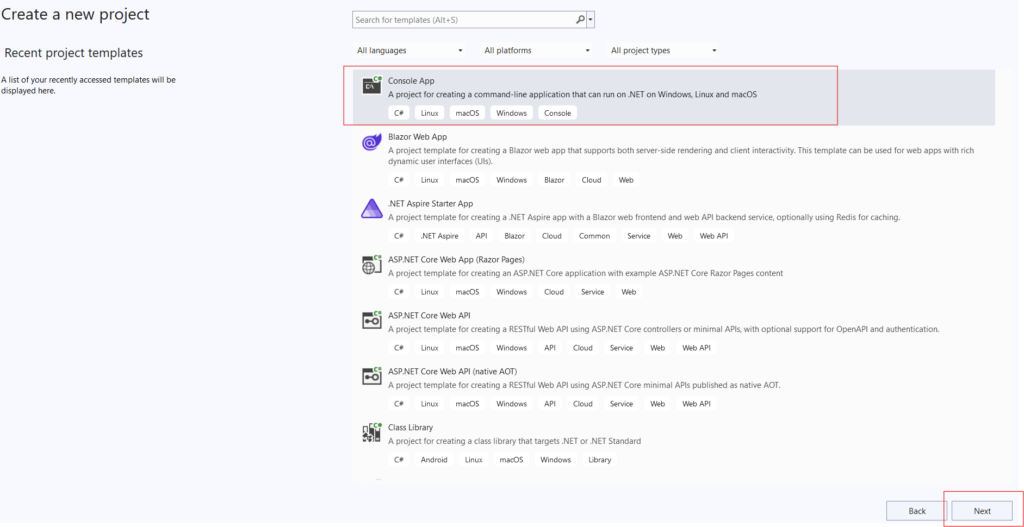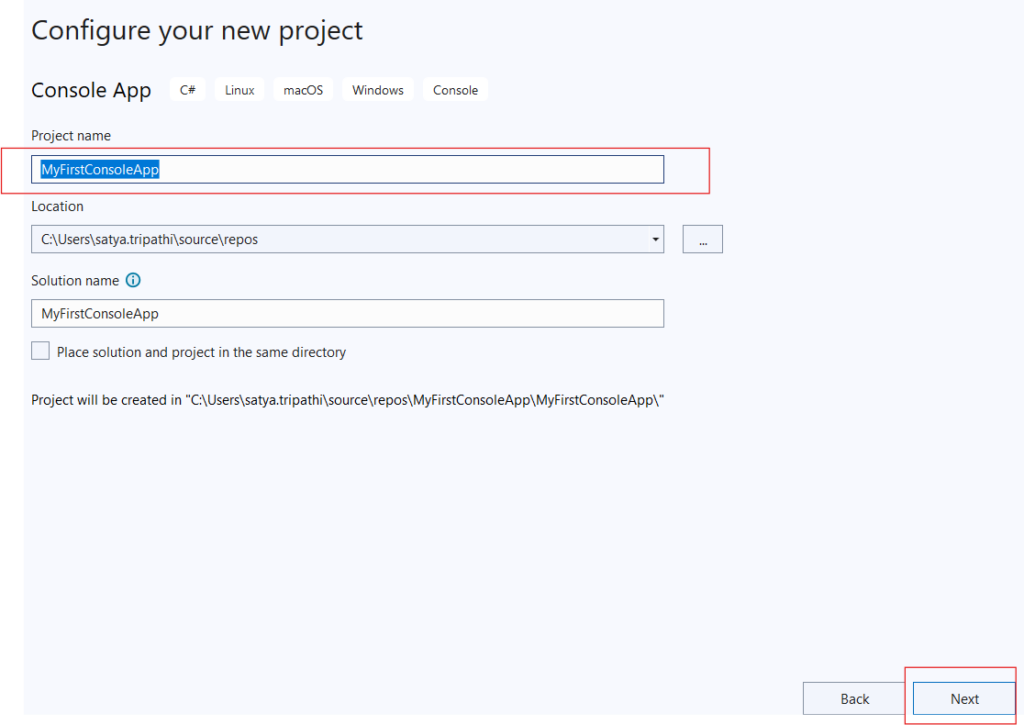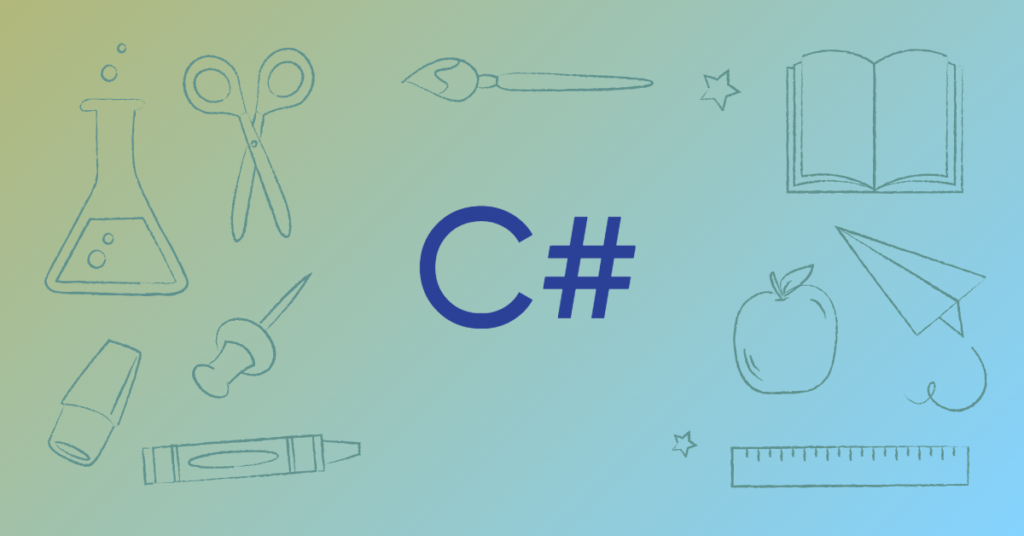In this article, we will explore the basic structure of a C# program using a console application.
What You’ll Learn in This Article:
- What is C#.NET?
- Advantages of using the .NET Framework from a C# perspective
- Different types of applications you can develop with C#.NET
- Understanding Visual Studio and its role in C# development
- What is a console application?
- How to create a console application using Visual Studio
- Breaking down the basic structure of a C# program, including:
- Importing section
- Namespace declaration
- Class declaration
- Main() method
First, we’ll introduce C#.NET and Visual Studio, along with the types of applications you can develop. Then, we’ll break down the fundamental structure of a C# program using a console application, ensuring you grasp the essential components. Let’s get started!
What is C#.NET?
C#.NET is a modern, object-oriented programming language developed by Microsoft for building a wide range of applications, including web, desktop, console, and RESTful services. It runs on .NET Framework, .NET Core, and .NET (latest versions), making it a versatile and cross-platform language.
C# combines the best features of C++, VB.NET, and Java, while also introducing additional powerful features that enhance productivity and maintainability. As we progress through this course, we’ll explore these advanced capabilities in detail.
Being a fully object-oriented language, C# supports all four OOP principles:
- Abstraction – Hiding implementation details
- Encapsulation – Restricting direct access to data by bundling it with related method
- Inheritance – Reusing code across multiple classes
- Polymorphism – Enhancing code flexibility and scalability
With its strong type safety, garbage collection, and extensive .NET ecosystem, C# remains one of the most widely used and in-demand languages in software development today.
Advantages of Using the .NET Framework from a C# Developer’s Perspective
The .NET Framework provides a powerful and consistent programming model for building a wide range of applications. For C# developers, it offers rich libraries (like ADO.NET, Entity Framework, and ASP.NET), strong type safety, garbage collection, and excellent support for object-oriented programming. With built-in security features and simplified deployment, it helps developers write robust, scalable, and maintainable applications quickly. Visual Studio integration and a vast community also make development smoother and more productive.
Different types of applications you can develop with C#.NET
- Desktop Applications
- Using WinForms or WPF to build Windows-based applications.
- Web Applications & APIs
- Develop powerful websites and RESTful APIs with ASP.NET Core.
- Mobile Applications
- Build cross-platform apps using Xamarin or .NET MAUI
- Cloud-Based Applications
- Integrate with Microsoft Azure to build scalable cloud solutions.
- Integrate with Microsoft Azure to build scalable cloud solutions.
- Create 2D/3D games using C# with Unity game engine.
- IoT Applications
- Build applications for Internet of Things (IoT) devices.
- Console Applications
- Simple command-line tools and utilities.
- Microservices
- Develop independent, scalable services using .NET Core.
Visual Studio is a powerful IDE for C# development, offering smart code editing, debugging, and project management tools. It simplifies building, testing, and deploying C# applications across desktop, web, cloud, and mobile platforms. With built-in IntelliSense, UI designers, and Git integration, it boosts productivity and streamlines the development workflow.
What is a console application?
A console application is a basic program that runs in a command-line interface (CLI), such as the Command Prompt or Terminal. It doesn’t have a graphical user interface (GUI), making it lightweight and perfect for tasks like automation, calculations, or testing business logic.
In C#, console applications are often used for learning, quick tools, and backend processes.
// Importing the System namespace which contains basic classes like Console
using System;
// Defining the Program class
class Program
{
// The Main method is the entry point of any C# console application
static void Main(string[] args)
{
// Writing a message to the console
Console.WriteLine("Welcome to My Console App!");
// Prompting user input
Console.Write("Enter your name: ");
// Reading input from user and storing in a local variable (data member of method)
string name = Console.ReadLine();
// Displaying a personalized message
Console.WriteLine($"Hello, {name}!");
}
}How to Create a Console Application Using Visual Studio
Creating a console application in Visual Studio is simple and great for beginners learning C#. Follow these steps:
- Open Visual Studio
- Launch Visual Studio from your system.

- Create a New Project
- Click on “Create a new project” from the start window.
- Select Console App Template
- Search for “Console App” (make sure to select Console App (.NET Core) or Console App (.NET Framework) based on your need).
- Click Next.

- Configure Your Project
- Enter the project name (e.g.,
MyFirstConsoleApp) - Choose a location to save the project
- Click Create
- Enter the project name (e.g.,

- Write Your Code
- Visual Studio will generate a basic
Program.csfile. - Visual Studio will generate a minimal code structure.
- Visual Studio will generate a basic
Console.WriteLine("Welcome to the latest .NET Console App!");
Console.Write("Enter your favorite programming language: ");
string language = Console.ReadLine();
Console.WriteLine($"Nice choice! {language} is awesome.");- Run the Application
- Click the Start button (or press
F5) to build and run your console app. - The output will appear in a terminal/console window.
- Click the Start button (or press
What’s New in This Style?
- No need for
class Programorstatic void Main() - Cleaner and shorter code
- Perfect for beginners and quick prototypes

Importing Section
The importing section in C# uses the using keyword to include namespaces that contain useful classes and methods. For example, using System; allows access to basic functionalities like Console.WriteLine().
using System; // Imports the System namespaceNamespace Declaration
A namespace in C# is used to organize and group related classes. It helps avoid naming conflicts in large applications. Developers often define custom namespaces based on project structure.
namespace MyConsoleApp
{
// Classes go here
}Class Declaration
A class in C# is a blueprint for objects. Every C# program must contain at least one class. For console applications, it’s usually named Program.
class Program
{
// Entry point and logic go here
}
Main() Method
The Main() method is the entry point of a C# application. It’s where the program starts execution. In newer versions of .NET, this can be omitted thanks to top-level statements, but it’s still used in many traditional projects.
static void Main(string[] args)
{
Console.WriteLine("Hello, World!");
}I hope you found this blog helpful and easy to follow!
If you enjoyed it or learned something new, feel free to leave a comment, share it with others, and let me know your thoughts or questions below. Happy coding!




Pingback: Boost Performance with AsParallel in C# LINQ - Codevidyalaya